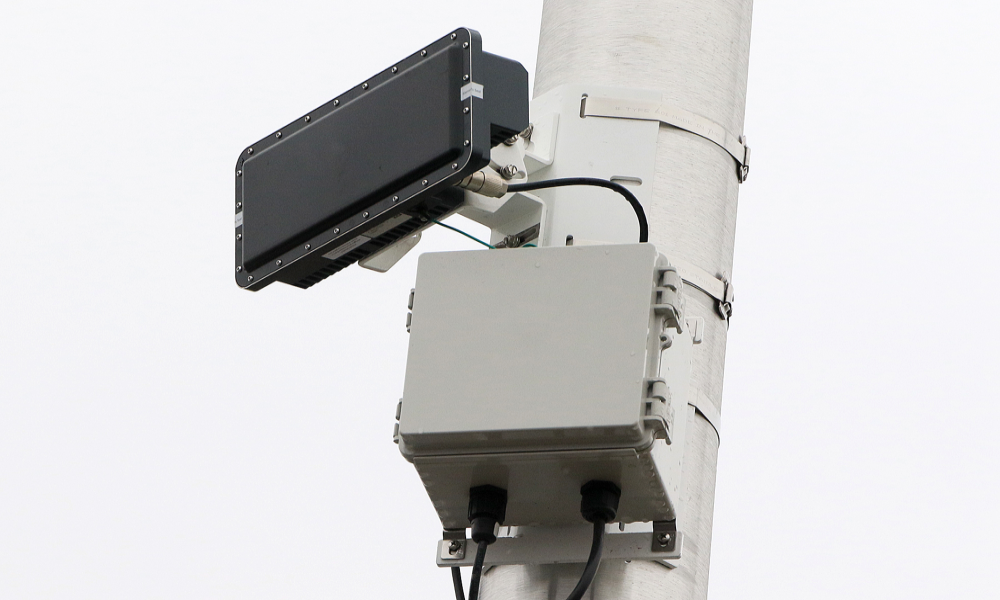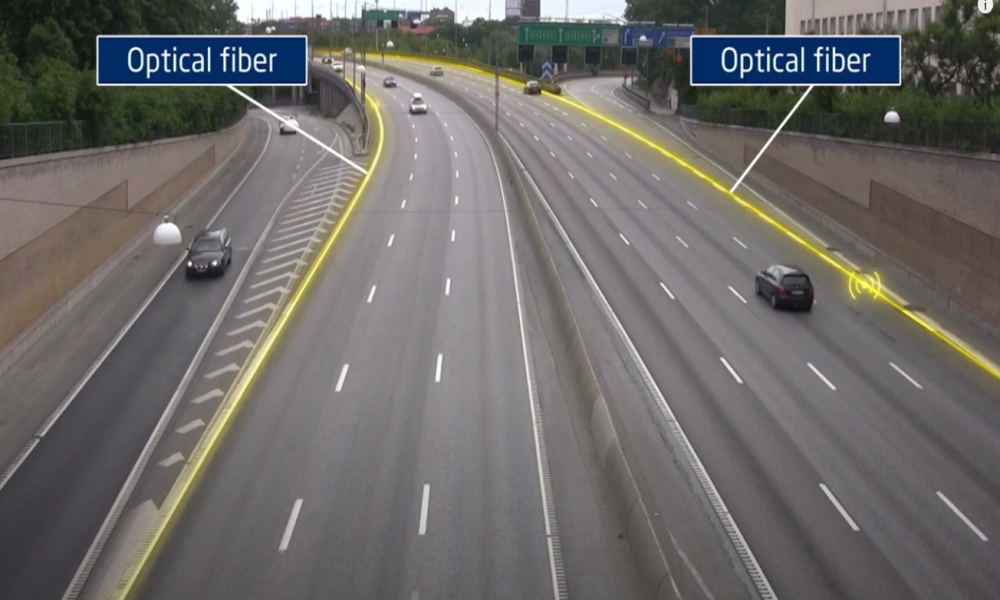The arteries of modern society, our motorways and freeways, demand meticulous and proactive management to ensure the lifeblood of commerce and personal mobility flows unimpeded. The consequences of inefficient traffic management - congestion, heightened safety risks, and economic losses - are far-reaching. For decades, the cornerstone of traffic monitoring has been the venerable inductive loop detector, a testament to robust engineering providing discrete, real-time data on vehicle speed and headway. This information, the bedrock upon which automated warning systems and dynamic speed limit adjustments were built, has served us well. However, the inherent limitations of these embedded sensors have catalysed a quest for more comprehensive and scalable solutions, culminating in the transformative potential of Distributed Fibre-Optic Sensing (DFOS).
While inductive loops have earned their reputation as the "gold standard" for localized accuracy and reliability, their fundamental design presents inherent drawbacks that become increasingly pronounced in the face of ever-growing traffic volumes and the imperative for proactive incident management. The very act of installation necessitates disruptive road surface excavation, a logistical hurdle that introduces delays, increases costs, and poses significant challenges, particularly during critical resurfacing projects. Furthermore, the discrete nature of their deployment, typically at intervals of 500 meters or more, inherently limits their spatial resolution. This discontinuous coverage leaves significant blind spots, rendering the detection of incidents or stationary vehicles between sensor locations a matter of statistical probability rather than guaranteed certainty. In a world demanding instantaneous awareness and rapid response, these limitations underscore the need for a more pervasive and continuous monitoring paradigm.

Recognizing these constraints, the research and engineering communities embarked on exploring alternative sensing modalities.
Predominantly, these efforts focused on leveraging overhead or verge-mounted radar and optical detection systems. These technologies offered the promise of non-intrusive installation and the ability to provide accurate, albeit localized, data, effectively replacing point-based inductive loop detectors at specific junctures. However, these systems are not without their own set of limitations. A fundamental challenge lies in the degradation of their accuracy with increasing distance, significantly impacting their effectiveness in applications demanding comprehensive linear monitoring, such as Stopped Vehicle Detection across extended highway sections. Moreover, the performance of radar and optical sensors is susceptible to adverse environmental conditions. Heavy precipitation, snowfall, fog, and even obscuration by large vehicles can severely attenuate their signal quality and reliability, particularly over longer ranges, compromising the integrity of the traffic data precisely when it is most critical.

It is against this backdrop of evolving needs and technological limitations that Distributed Fibre-Optic Sensing (DFOS) emerges as a truly disruptive innovation, offering the compelling capability of continuous linear detection across vast stretches of infrastructure. This technology harnesses the inherent properties of standard fibre-optic cables, typically buried alongside the roadway, transforming them into highly sensitive distributed sensors capable of detecting subtle vibrations induced by passing vehicles. Originally conceived for security applications, such as perimeter intrusion detection and pipeline integrity monitoring, DFOS leverages the fundamental principles of light backscattering to identify and characterize disturbances along the length of the fibre. By transmitting precisely controlled pulses of light into the fibre and meticulously analysing the characteristics of the backscattered signals - including variations in intensity, frequency, and phase - even minute vibrations can be detected, localized with high precision, and subsequently interpreted.

In the context of highway applications, DFOS represents a profound paradigm shift in traffic monitoring strategies. Its inherent ability to provide continuous, linear data along the entire length of the deployed fibre-optic cable enables truly comprehensive coverage of extensive road networks. An optical integrator unit, connected to one or both ends of the fibre-optic cable, acts as the central processing hub. This sophisticated device interrogates the backscattered light, which carries the imprint of the vibrations generated by the interaction of vehicle tires with the road surface. Critically, the true power of DFOS in this domain is unlocked through the integration of advanced Artificial Intelligence (AI) and sophisticated signal processing algorithms. These intelligent systems are capable of sifting through the vast amounts of raw data generated by the continuous sensing, translating subtle variations in the backscattered light into meaningful and actionable traffic intelligence. This includes precise measurements of vehicle speed, traffic flow rates, and traffic density, all derived from the continuous vibration signature along the highway.
The pioneering work of companies like NEC has further propelled the capabilities of DFOS, extending its utility beyond basic traffic flow parameters to encompass the detection of intricate and potentially safety-critical vehicle behaviours, such as irregular lane changes. This advanced capability is achieved through sophisticated analysis of the spatial and temporal characteristics of individual vehicle vibration signatures. By meticulously analysing the centroid of these vibration patterns along the fibre, DFOS can pinpoint the precise location of lane changes. Furthermore, the system leverages subtle variations in the frequency content of the vehicle-induced vibrations. Vehicles travelling in lanes closer to the buried fibre-optic cable generate higher frequency vibrations. This nuanced frequency differential allows the AI algorithms to accurately determine the lane of travel and, consequently, identify lane changes with remarkable accuracy. This granular ability to track the movement of individual vehicles and identify anomalous behaviours opens up new avenues for proactive incident detection, identification of potentially hazardous driving patterns, and even the early detection of subtle road surface defects that manifest as unusual vehicle vibrations.

While earlier applications of DFOS in transportation primarily focused on detecting aggregate linear traffic movements, enabling the identification of congestion hotspots and overall flow patterns, the recent advancements in individual vehicle tracking and lane change detection represent a significant leap forward. This enhanced granularity provides a far more comprehensive and dynamic understanding of traffic flow, moving beyond macroscopic metrics to offer microscopic insights into driver behaviour and potential safety risks.

The inherent advantages of DFOS extend beyond its sensing capabilities to encompass its fundamental equipment topography. A single, relatively compact cabinet housing the optical interrogator and processing unit can effectively monitor extensive stretches of highway, often tens of kilometres in length. This dramatically reduces the need for distributed roadside equipment, leading to substantial cost savings in both initial installation and ongoing maintenance. Furthermore, minimizing the physical infrastructure along the roadside inherently reduces the exposure of maintenance personnel to the significant hazards associated with working in close proximity to live traffic. The minimal roadside footprint of a DFOS-based system, essentially consisting of a buried fibre-optic cable running inconspicuously alongside the carriageway, also significantly enhances the aesthetic appeal of the road infrastructure and minimizes the environmental impact associated with traditional, equipment-heavy monitoring systems.
In conclusion, the evolution from discrete inductive loops to continuous DFOS represents a profound and transformative advancement in the field of highway monitoring technology. While inductive loops have provided a valuable and reliable foundation for decades, their inherent limitations have spurred the necessary development of more sophisticated and comprehensive solutions. While radar and optical systems offer certain improvements in specific applications, their performance remains constrained by factors such as distance and adverse environmental conditions. DFOS, with its unique capability for continuous linear detection, effectively overcomes many of these limitations, providing a more accurate, comprehensive, and resilient understanding of dynamic traffic flow. The ability to monitor vast stretches of highway with a minimal roadside equipment footprint, coupled with the increasingly detailed and granular insights into individual vehicle behaviour afforded by advancements in AI-powered DFOS analytics, offers significant and compelling benefits for proactive traffic management. By enabling the earlier and more reliable detection of incidents, the dynamic optimization of traffic flow in response to real-time conditions, and the proactive identification of emerging road defects, DFOS is poised to play an increasingly vital and indispensable role in shaping the future of safer, more efficient, and more sustainable transportation systems. The synergistic combination of the distributed sensing capabilities inherent in fibre-optic cables and the analytical power of artificial intelligence represents a truly comprehensive and cost-effective solution for the intelligent management of our modern highway networks.

150x150.png)